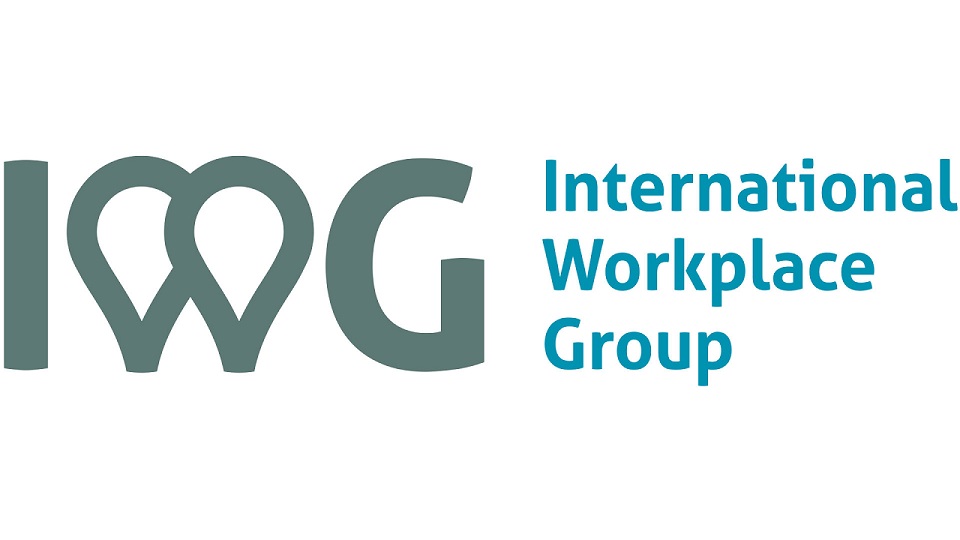Synthèse
The office real estate market experienced a major slowdown due to the COVID-19 pandemic, with a sharp drop in demand and investment. In the Paris region in particular, office rentals fell by 50% in 2020 compared with the previous year, while vacant office space increased by more than a third. Investment also contracted by more than a third. Despite this, the European market is on the rise, with 132 billion euros invested in office real estate. Demand for flexible office space is set to change the dynamics of the market, with coworking expected to attract more interest, and could occupy between 15 and 20% of office space in Paris within ten years. Energy efficiency is likely to become more influential, favoring new and renovated buildings, while older, larger offices, such as those in La Défense, may struggle in the short term. The popularity of telecommuting is likely to reshape office organization, with an emphasis on collaborative and knowledge-sharing spaces rather than traditional configurations.
Transition and resilience in the French office real estate sector
The French office property sector, a key component of the wider commercial real estate market, has undergone considerable change in recent years, particularly influenced by economic, technological and societal trends. Companies active in the real estate sector fall into two main categories: property development and property management. These entities often collaborate through the stages of land appraisal, project monitoring and transaction completion to produce a lively market that sees significant investment. In France, the strong presence of real estate developers, companies and new entrants such as coworking service providers like WeWork creates a dynamic environment.
The country's market, particularly in Paris, is notable for its attractiveness. However, urban centers such as Lyon, Lille, Toulouse, Aix-Marseille, Bordeaux and Nantes have also seen growth. Nevertheless, the COVID-19 pandemic has reduced investment, pointing to a major shift in demand for flexible office space, due in part to the rise of telecommuting.
On the demand side, a variety of players are contributing to market activity. Investment funds and corporations acquire or lease buildings to meet their operational needs. Average office rents per square meter and the volume of demand placed, which refers to rentals or sales of office space to occupiers, are crucial indicators of market health. To assess the effects of macroeconomic factors on investment demand, the correlation between GDP and real estate indices is significant. Interest rates set by central banks also influence market dynamics, as lower rates facilitate borrowing and propel investments towards higher yields compared to bonds.
Despite this favourable backdrop, the pandemic has cast a shadow over future investments. Looking at individual French cities, Paris leads the way in demand for office space, but take-up has fallen. Lyon is the second most dynamic city in the sector, with an increase of over a third. Interestingly, despite a decline, the Marseille-Aix region continues to show strong demand for office space, with a volume of between 135 and 140,000 square meters by 2020. Telecommuting has emerged as a transformative trend that is set to continue. Employees find telecommuting attractive because of the reduced commuting time and flexible working hours,
Key players shaping the office real estate market landscape
The office real estate market is a dynamic and complex sector, driven by a diverse set of companies, each playing a specific role in the sector's evolution. A closer look at this complex market reveals the nuanced and essential contributions of various players, from construction giants to co-working wizards, all of whom fuel growth and innovation within the space.
- Construction titans - Driven development
At the forefront of the built environment, we have construction-promoted developers such as Vinci Immobilier, Bouygues Immobilier and Eiffage Immobilier. These industry stalwarts are players in their own right, not only laying the bricks and mortar for office space, but also leading large-scale development projects from conception to completion. They engage in a range of activities from land acquisition to technical and financial studies, to the actual construction and final marketing of their completed projects.
- Masters of real estate development
A little further down the market are real estate development specialists such as Altarea Cogedim, Icade and Nexity. These companies spearhead the transformation of simple architectural visions into tangible commercial fabrics. They sustainably manage the lifecycle of development projects, ensuring that they meet the evolving requirements of modern business, which includes a keen interest in energy efficiency and integrated services to create smart, connected office spaces that attract blue-chip tenants.
- Real estate gurus and banking-related developers
Banking-related real estate services specialists and developers, such as CBRE, JLL and BNP Paribas Real Estate, occupy another essential niche. They embody the advisory and management expertise needed to navigate the complex waters of real estate transactions, asset management and property development strategies. By offering advisory and transaction services, these companies play a central role in managing the lifecycle and value appreciation of office assets.
- Champions of co-working spaces
The emerging co-working segment is being revolutionized by pioneers such as WeWork and Morning. These co-working specialists are responding to the growing demand for flexible, shared office environments, supporting a new era of space use by businesses of all sizes. Their innovative models incorporate shared facilities and community-building approaches that redefine traditional conceptions of office environments.
- Strategists in real estate asset management
Gecina, a pioneer in real estate asset management, is at the forefront of asset management.
à la compréhension de ce marché
Détail du contenu
 Informations
Informations
- Nombre de pages : 30 pages
- Format : Version digitale et PDF
- Dernière mise à jour : 24/04/2024
 Sommaire et extraits
Sommaire et extraits
1 Market overview
1.1 Definition and scope of the study
There are many players in the office real estate market, mainly in the fields of development and property management .
At the heart of this market, office property development companies carry out operations in a number of stages, often in collaboration with other players:
- Finding and evaluating land
- Setting up and monitoring operations (works, financing)
- Marketing and delivery
There are a number of indicators for monitoring activity in the office real estate sector, such as annual investments, average rent per m², and take-up.
It is also important to note that demand for office real estate comes from a number of sources: on the one hand, investment funds acquire new or second-hand buildings and rent them out; on the other, companies lease or buy office space directly, depending on their needs and activity.
The European market has seen a sharp decline in recent years, with nearly €39 billion invested in office real estate in 2023 in Europe - 59% less than in 2022. The market features a wide range of players: real estate developers, property companies, real estate services and property management specialists, as well as new entrants such as WeWork in the coworking segment.
The French market is also in decline, despite Paris being a particularly attractive location. While the Paris region boasts by far the largest office stock in France, it has not escaped the rule in terms of falling demand and investment in the sector, experienced by other major cities - with the exception of Bordeaux.
The global economic situation has had a severe impact on the French commercial real estate market, with a notable -57% drop in investment over the past year. This trend is attributed to rising financing costs, induced by fluctuations in central bank interest rates, prompting investors to adopt a cautious attitude.
Despite the challenges encountered, opportunities for repositioning and innovation are emerging for real estate professionals, particularly with the stabilization of key interest rates, the rebuilding of the real estate premium and the decline in appraisal values. In addition, the transition to a hybrid working model and the growing importance of environmental performance could redefine the corporate real estate landscape in 2024 and beyond.
1.2 The European office property market
The European commercial real estate market.
According to BNP Paribas Real Estate, **** was a difficult year for commercial real estate in Europe, with investment activity falling by an average of **% to €*** billion, the lowest level since ****. Property values also fell by an average of **% across the continent. This decline is explained ...
1.3 The French office property development market
The French office property development market
With a CAGR of -*.*% between **** and ****, the office property development market in France is in overall decline, with office occupancy stagnating at around **% in the capital, and a growing adoption of flex office, even reaching **% in Greater Paris. This trend is leading to the ...
1.4 The impact of the Covid-19 crisis
The chart above compares, at base *** ****, the evolution of office property developers' sales between **** and ****.
After a drop in March ****, certainly linked to health restrictions, there was a significant rebound in April, followed by a fall in May.
After May, sales remained lower than in ****, but the impact was not too ...
2 Demand analysis
2.1 Macroeconomic determinants of investment demand for office property
Macroeconomic determinants of commercial real estate investment
Real estate as a whole is highly dependent on the general level of economic activity, as reflected in GDP. As the AsiaGreen website explains, there is a strong correlation between GDP per capita and the property price index, whether residential or commercial.
Another important ...
2.2 Take-up of office space varies from city to city in France
According to ImmoStat,take-up of office space corresponds to all rentals or sales to occupiers (***) of office space. It is expressed in square meters of floor space. The indicator only takes into account new leases signed for a term of more than ** months. lease renegotiations and sales to existing tenants are ...
2.3 Breakdown of office property investments in France
The graph below highlights the fact that the Paris region accounts for most of the investment in France.
France, ****, as % of total Source: ****
the table below shows investments and yields in different cities according to BNP Paribas:
given the maturity of the Paris market, yields are higher in the regions.
2.4 Demand trends: the rise of telecommuting
The impact of telecommuting on office demand
Beyond the Covid-** crisis, which caused an explosion in the practice, it had already been on the rise for several years, notably due to repeated strikes and the attractiveness of the practice. According to the Malakoff Humanis survey, teleworker satisfaction rates remained stable at ...
2.5 Demand trends: greater office flexibility and collaboration
Flexible" offices: the rise of co-working spaces or "tiers-lieux"
Demand for coworking spaces is coming mainly from SMEs, start-ups or certain freelancers (***).
Who uses coworking spaces? World, ****, in Source: ****
Nonetheless, large companies could be making increasing use of these spaces, which can complement their offices, according to Les Echos. Indeed, they ...
3 Market structure
3.1 Segmentation and player dynamics
What does it mean to be a property developer?
The criteria for success are rapid marketing and, above all, ensuring that the end result is in line with budget forecasts. To achieve this, a real estate development project often follows the same stages:
Launching the project after studying the opportunities Control ...
3.2 Real estate developers
According to Acoss, the number of employees in the sector rose sharply between **** and ****-** (***), before starting to decline during ****. The number of companies, on the other hand, has tended to stagnate over the period, but is down on ****-****. This may reflect a trend towards concentration around the largest ...
3.3 Analysis of office supply in Paris Region
Office floor space in Paris Region
According to ORIE, there are **.** million m² of usable office space in the Paris region. The graph below highlights the upward trend since ****, which culminated in ****, the date from which the market marked a clear downturn. It is equal to the floor area (***), minus the ...
3.4 Analysis of office supply in France's major regional cities
The table below highlights the supply in the * largest regional office markets, as estimated by CBRE in ****. [***]
Among the problems of office space supply in these metropolises, one of the aspects often mentioned is the lower quality of supply - sometimes poorly located and unsuited to needs (***)[***]
3.5 Where are coworking spaces located in France?
Number of workspaces by region France, ****, in numbers Source: ****
The graph above shows that Paris (***) will dominate the number of co-working spaces in **** in France. Nevertheless, Bordeaux, Nantes, Marseille and Lyon in particular have seen increased growth in recent years.
The chart below highlights that WeWork - despite difficulties in ****/**** - ...
4 Offer analysis
4.1 Analysis of office supply and recent changes
General framework :
Office real estate is part of commercial real estate, as opposed to residential real estate. An office is a workplace in which managers and employees carry out their professional activities, consisting mainly of workstations and meeting rooms, in open or closed spaces. To facilitate employee access and benefit from ...
4.2 Office rental prices by city
The graphs below show the evolution of office property rents in France's main cities.
This is the "prime" rent, i.e. the highest face rent, excluding convenience transactions, for a product of standard size in relation to demand in the market sector, of excellent quality and offering the best amenities, in ...
4.3 What does the future hold for office real estate?
Towards more flexible office real estate in the post-covid ** world:
What role can offices play in the rise of telecommuting?
The rise of partial telecommuting fits in well with the flexoffice trend, so we're likely to see a drop in the number of square meters per person. Telecommuting by no means ...
5 Regulations
5.1 Regulation of investment and real estate activity
Hoguet law hoguet Law: regulation of real estate activity[***]
The activities of real estate professionals (***).
The Hoguet law regulates the following activities:
Real estate agents and business sales representatives; List brokers; Apartment hunters, real estate brokers or business introducers; Property managers; Co-ownership managers.
The PINEL law has made it possible to ...
5.2 Legal form of the main commercial real estate investors
According to the aMF nomenclatureunder the acronym OPCVM (***):
Investment funds
Investment funds are highly international players, benefiting from the blurring of borders in the globalization of financial flows. Their structures can therefore vary greatly depending on the country of origin, and they have no obligation as to the proportion of real ...
6 Positioning the players
6.1 Segmentation
- Icade
- Nexity
- BNP Paribas Real Estate France
- Altarea Cogedim
- Vinci Immobilier
- Bouygues Immobilier
- CBRE
- JLL Jones Lang Lasalle
- WeWork
- IWG Regus (International Workspace group)
- Cushman & Wakefield
- Arthur Loyd
- Arthur Loyd
- Batipart
- Bureaux Locaux
- Ivanhoé Cambridge
- NCT immo
- SFL Foncière Lyonnaise
 Liste des graphiques
Liste des graphiques
- Evolutions des investissements en immobilier d'entreprise dans quelques pays européens
- Evolution des investissements en immobilier de bureau à destination du marché européen
- Valeur des investissements en immobilier d'entreprise
- Répartition des actifs à l'achat dans le secteur de l'immobilier commercial privilégiés par les Français
- Répartition des investissements en immobilier d'entreprise en France
Toutes nos études sont disponible en ligne et en PDF
Nous vous proposons de consulter un exemple de notre travail d'étude sur un autre marché !
Dernières actualités
Entreprises citées dans cette étude
Cette étude contient un panorama complet des entreprises du marché avec les derniers chiffres et actualités de chaque entreprise :
 Choisir cette étude c'est :
Choisir cette étude c'est :
Accéder à plus de 35 heures de travail
Nos études sont le résultat de plus de 35 heures de recherches et d'analyses. Utiliser nos études vous permet de consacrer plus de temps et de valeur ajoutée à vos projets.
Profiter de 6 années d'expérience et de plus de 1500 études sectorielles déjà produites
Notre expertise nous permet de produire des études complètes dans tous les secteurs, y compris des marchés de niche ou naissants.
Notre savoir-faire et notre méthodologie nous permet de produire des études avec un rapport qualité-prix unique
Accéder à plusieurs milliers d'articles et données payantes
Businesscoot a accès à l'ensemble de la presse économique payante ainsi qu'à des bases de données exclusives pour réaliser ses études de marché (+ 30 000 articles et sources privées).
Afin d'enrichir nos études, nos analystes utilisent également des indicateurs web (semrush, trends…) pour identifier les tendances sur un marché et les stratégies des entreprises. (Consulter nos sources payantes)
Un accompagnement garanti après votre achat
Une équipe dédiée au service après-vente, pour vous garantir un niveau de satisfaction élevé. (+33) 9 70 46 55 00
Un format digital pensé pour nos utilisateurs
Vous accédez à un PDF mais aussi à une version digitale pensée pour nos clients. Cette version vous permet d’accéder aux sources, aux données au format Excel et aux graphiques. Le contenu de l'étude peut ainsi être facilement récupéré et adapté pour vos supports.
 Nos offres :
Nos offres :
the office property market | France
- Quels sont les chiffres sur la taille et la croissance du marché ?
- Quels leviers tirent la croissance du marché et leur évolution ?
- Quel est le positionnement des entreprises sur la chaine de valeur ?
- Comment se différencient les entreprises du marché ?
- Données issues de plusieurs dizaines de bases de données
Pack 5 études (-15%) France
- 5 études au prix de 75,6€HT par étude à choisir parmi nos 800 titres sur le catalogue France pendant 12 mois
- Conservez -15% sur les études supplémentaires achetées
- Choisissez le remboursement des crédits non consommés au terme des 12 mois (durée du pack)
Consultez les conditions du pack et de remboursement des crédits non consommés.
- 06/07/2023 - Ajout des informations de l'entreprise SFL
- 06/07/2023 - Ajout des informations de l'entreprise NCT immo
- 06/07/2023 - Ajout des informations de l'entreprise Ivanhoé Cambridge
- 06/07/2023 - Ajout des informations de l'entreprise Bureaux Locaux
- 06/07/2023 - Ajout des informations de l'entreprise Batipart
- 06/07/2023 - Ajout des informations de l'entreprise Arthur Loyd
- 06/07/2023 - Ajout des informations de l'entreprise Arthur Loyd
- 05/06/2023 - Ajout des informations de l'entreprise Cushman & Wakefield
- 26/02/2023 - Mise à jour des données financières de l'entreprise Altarea Cogedim
- 21/02/2023 - Mise à jour des données financières de l'entreprise WeWork
- 15/02/2023 - Ajout des informations de l'entreprise IWG





 Immobilier : les syndics de Nexity prennent leur indépendance - 04/04/2024
Immobilier : les syndics de Nexity prennent leur indépendance - 04/04/2024
 Immobilier : Icade va transformer une partie de ses bureaux - 19/02/2024
Immobilier : Icade va transformer une partie de ses bureaux - 19/02/2024
 WeWork quitte La Défense - 18/01/2024
WeWork quitte La Défense - 18/01/2024
 Vinci Immobilier, premier grand promoteur à lancer un plan social - 17/01/2024
Vinci Immobilier, premier grand promoteur à lancer un plan social - 17/01/2024




















